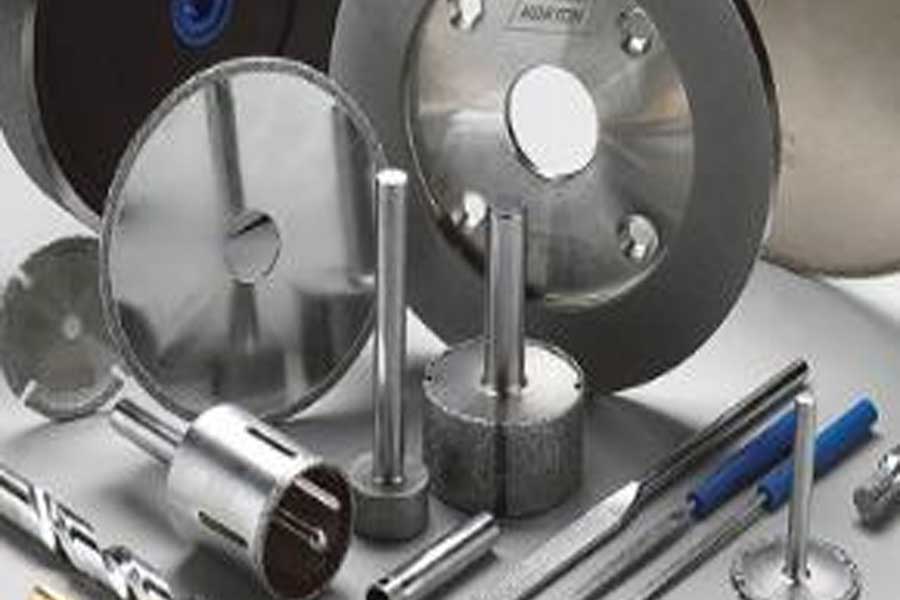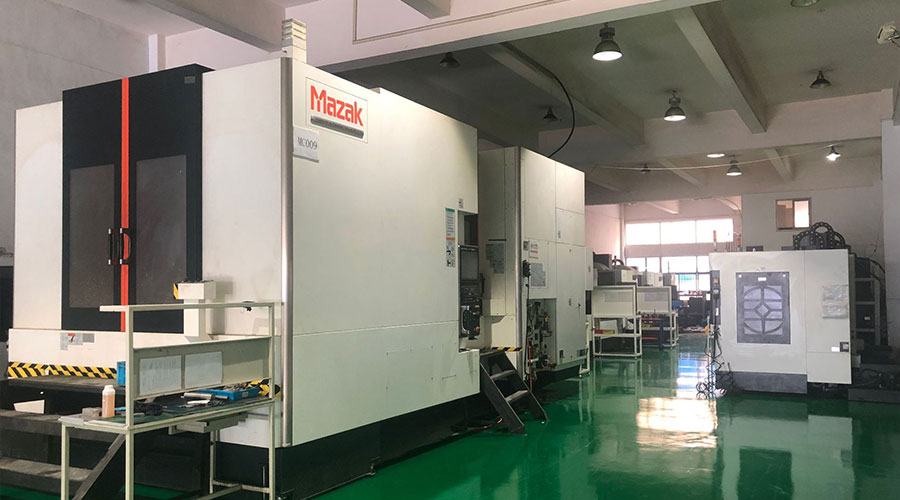Although the development of machining centers has improved the ability to operate in large quantities, there are still some products that need to be ground. Compared with conventional machining, grinding has many advantages, including longer tool life, finer surface finish, and the ability to more effectively remove difficult-to-machine materials (such as new ceramic composite materials and metal alloys impregnated with carbides) . What are the advantages of the new grinding technology over traditional machining? What do you need to keep in mind when converting your current machining application to grinding?
Traditionally, machining is a very effective process that can quickly remove material. Driven by a larger cutting surface and a larger chip size, the frictional interaction between the tool and the workpiece (grinding and plowing) is extremely small compared with grinding; this reduces the need for complex coolant systems Demand. However, a larger chip size may adversely affect the final surface roughness of the part, and a subsequent grinding process is usually required to produce a fine finish. The latest developments in abrasives and bonding chemistry, as well as mechanical and coolant nozzle technology make the application of grinding on new and difficult-to-machine alloys more competitive than even the removal rate of processed materials.
The advantage of grinding is that there are hundreds of cutting points on a typical grinding wheel (compared to a few cutting points on a typical milling machine or lathe). Many cutting points will tend to produce smaller chips, thereby improving the surface finish and applying compressive residual stress on the surface of the part. In addition, the large increase in the number of cutting points allows more uniform wear along the grinding wheel, thereby prolonging the service life of the grinding wheel and reducing the number of tool changes. Typical grinding wheels use hard ceramic or super abrasive particles, which are much harder than many machining tools on the market (although ceramic tools are very close).
Convert the machining process to grinding
When considering whether an existing machining or turning application can be performed by grinding, the first step in the process should be to evaluate process limitations, pain points, and materials.
Common problems where grinding solutions can be used include:
1. What material do I need to process? Currently, difficult-to-process materials are pushed to higher volumes, usually because their performance is better than traditional materials. These include ceramic composite materials, carbon fiber, heavy alloy aerospace metals and some powdered metals. It is well known that they are difficult to process due to their high hardness and chipping potential. Grinding here will produce smaller chips and make the surface in a state of compressive residual stress, which is an economical solution.
2. Does the application require high cutting volume and very precise shape and surface treatment? By changing the grinding wheel and/or dressing, the characteristics of the grinding action can be modified to achieve a higher cutting volume or produce a good finish. The advantage of grinding is that it can usually be done using the same grinding wheel or at least the same machine system.
3. Do I currently have a production line in which machining is performed before the grinding operation? Can I transfer the process to a single grinder to save floor space and cycle time? Saving floor space is essential for high-volume manufacturing, and shortening the process to fewer machines can have a significant impact on process efficiency. This also reduces the need to move parts from one machine to another, which can reduce overall processing time.

4. Will the tool life or tool change time in the machining process affect productivity? The need to stop the replacement and re-cutting of the tool will result in increased part costs and frequent shutdowns. The use of grinding wheels can help minimize downtime and reduce processing costs. This is especially true for new alloys that are difficult to grind.
5. Are glitches a problem? Larger burrs come from larger chips. The use of grinding wheels can often help reduce the tendency for large chips, and therefore minimize the need for the deburring process.
6. Will the residual stress on the part surface affect the shape, function or rework? An important benefit of grinding is the compressive residual stress applied to the surface of the part during machining. If residual stress causes the part to distort, warp, or bend after machining, sanding is an excellent way to remove material and relieve some of the stress in the part.
Product precautions
For new processes, choosing a grinding platform has several advantages over conventional processing platforms, including higher rigidity, dressing capabilities and sophisticated coolant systems. However, if you want to modify the existing process using mechanical equipment, it can usually be achieved by making some improvements to the coolant and electroplating the grinding wheel, without the need for trimming to maintain its shape. The modification required in these cases is mainly related to the conversion of the coolant system to grinding oil, which is usually optimized for various conditions (such as higher flash point, low foam, and environmental/cleanliness factors). The biggest change in retrofitting the existing process is to ensure that there is enough speed to match the wheel speed. Compared with buying new equipment,
In these applications, the advantages of electroplated wheels include the ability to electroplate objects of almost any shape, including drill bits, milling cutters, wheels and quilts, and maintaining tight tolerances (as low as 0.0004 inch) capacity.
example
There are many examples of how customers adapt the machine to the grinding concept to improve the overall process and save costs. In one example, an energy company is a dual bearing race for ceramic turbines. The challenge is to ensure that the races are the same as each other after hardening to 65RHC. Due to the wear of the ceramic blades during the turning process, a lot of part rework is required to match the seat ring. The solution is to realize an electroplated grinding wheel that can grind two hardened races at the same time. Because the grinding wheel uses cBN abrasives and the wear is very low and uniform, rework is eliminated. As a result, this reduced the total cycle time of the entire part from 30 minutes to 11 minutes, saving the company more than $80,000 per year.
Another example is solid gears. The usual practice is to mill or hob gears in a softened state, then harden and grind the final surface. Some people use the method of quenching the gear first, and then rough and fine grinding on a single grinder with a high-performance grinding wheel (such as Norton Xtrimium or Quantum). A customer can cut cycle time in half by applying this technology.
Not all customers can modify or purchase new equipment to test whether grinding and machining are a good solution. In this case, the customer uses the machining process on a simple three-axis machining center. When running with small ball mills with strict tolerances, they face the challenge of material tearing. The method they took was to order an electroplated feather pen with the same size and shape as the ball mill for finishing. This eliminates material tearing (due to the smaller chip size) and can be implemented without changing existing equipment. Although the price of grinding tools is higher than that of ball grinding tools, it is reasonable because there is no need to tear in the material, which can save a lot of rework time.
Many high-performance industries, including the aerospace industry, have made huge investments in next-generation grinding units to obtain grinding and machining capabilities to optimize processes. For those customers with low mixing volume and mass production, the use of the latest high-performance grinding machine and grinding wheel technology can show a significant improvement over machining. But for many smaller companies, these batteries may not be cost-effective, especially for high-mix, low-volume equipment. In these cases, converting the existing machining process to the use of electroplated tools for grinding can bring far-reaching benefits in terms of cycle time, lowering the overall cost of parts, extending tool life and consistency of part quality.
Link to this article:What are the advantages of the new grinding technology over traditional machining?
Reprint Statement: If there are no special instructions, all articles on this site are original. Please indicate the source for reprinting:https://www.cncmachiningptj.com/,thanks!
 Sheet metal, beryllium, carbon steel, magnesium, 3D printing, precision CNC machining services for heavy equipment, construction, agriculture and hydraulic industries. Suitable for plastics and rare alloys machining. It can turn parts up to 15.7 inches in diameter. Processes include swiss machining,broaching, turning, milling, boring and threading. It also provides metal polishing, painting, surface grinding and shaft straightening services. The production range is up to 50,000 pieces. Suitable for screw, coupling, bearing, pump, gearbox housing, drum dryer and rotary feed valve applications.PTJ will strategize with you to provide the most cost-effective services to help you reach your target,Welcome to Contact us ( [email protected] ) directly for your new project.
Sheet metal, beryllium, carbon steel, magnesium, 3D printing, precision CNC machining services for heavy equipment, construction, agriculture and hydraulic industries. Suitable for plastics and rare alloys machining. It can turn parts up to 15.7 inches in diameter. Processes include swiss machining,broaching, turning, milling, boring and threading. It also provides metal polishing, painting, surface grinding and shaft straightening services. The production range is up to 50,000 pieces. Suitable for screw, coupling, bearing, pump, gearbox housing, drum dryer and rotary feed valve applications.PTJ will strategize with you to provide the most cost-effective services to help you reach your target,Welcome to Contact us ( [email protected] ) directly for your new project.
Link to this article:What are the advantages of the new grinding technology over traditional machining?
Reprint Statement: If there are no special instructions, all articles on this site are original. Please indicate the source for reprinting.:Cut Wiki,Thanks!^^
